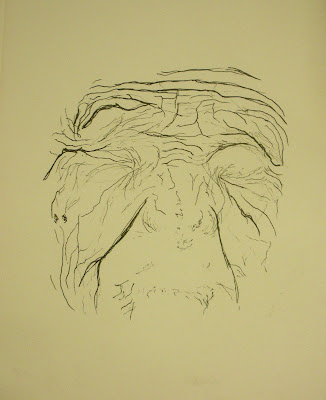I have started drawing portraits from my old family photos and am finding it extremely interesting. I feel like the more I study the images the more I seem to generate an opinion on the people pictured. I am starting to imagine whole personalities and traits and the more I study the faces the more I feel like I know the people.
I have also made a book for the photographs to sit in because they were originally just mounted onto some grey paper which over time had deteriorated a lot. My dad wanted them to stay on the paper so they didn't get ruined trying to peel them off so I have kept them on this paper but have attached them into a hard backed book made from card. The photos are very delicate and already have quite a few tears and creases so I didn't want them to get even more tarnished in the process of studying and drawing them - especially not when I use a lot of paint and water! There were also some loose photographs that I have put into a photo album that I bought in a charity shop - everything involved in this project has a history and I want that to be apparent.
There is one person, a man, who appears in a lot of the images - I think this is my Grandma's father. I find it so interesting to see photographs from a short period of his life, which includes images from when he was in the Navy. I have drawn quite a few images of him and have also managed to get hold of two of his old smoking tins, one of which contains his shaving set. These possessions seem to bring everything together - the drawings, the photographs and the objects are, together, a collection representing a human life. There is a definite sense of history and time when all these things come together. The thing I find most fascinating about the tobacco tins and shaving set is the way the tins have aged, they are in surprisingly good condition yet every mark and dent is the result of human interference. There would have been a time when he carried the tin around with him everywhere and that is definitely apparent. The shaving set is also such a personal object that would have probably been a valuable possession - it would have been used every couple of days and been fairly expensive for the razor and brush. Everytime I look at the smoking tins I can't help but picture him shaving, or rolling a cigarette, going about his day-to-day life. I hope that my drawings give the audience a similar effect - wondering about the history of the person and automatically generating a story in your mind, and also to get a sense of time.

















































